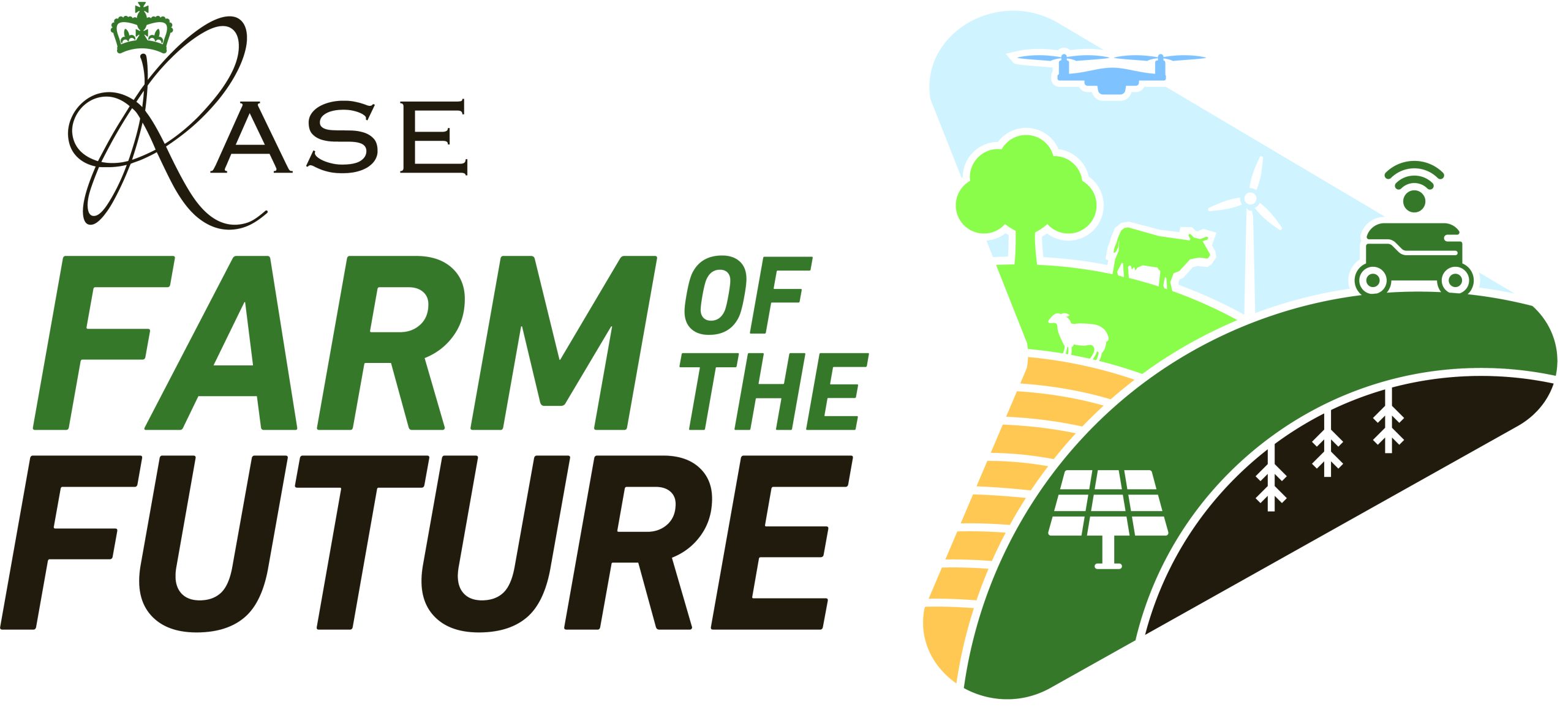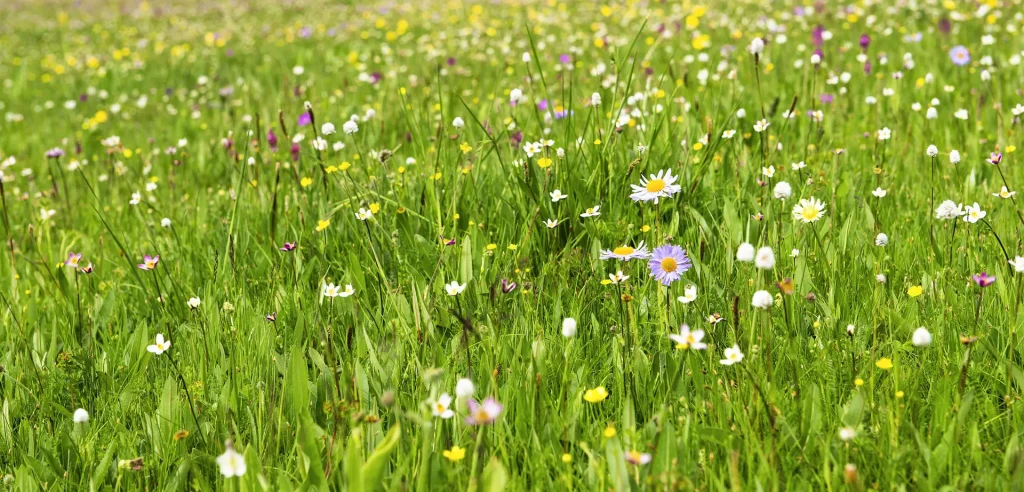Biodiversity Net Gain (BNG) became a legal requirement for developers in England in 2024. But what is BNG? And what opportunities, if any, does it create for farmers?
A recent Farm of the Future webinar covered this topic in depth, and can be watched in the RASE members’ resources. The following blog covers some key insights from the webinar, including the policy background, what BNG is trying to achieve, how it works in practice and options for farmers and landowners considering getting involved in a BNG project.
What is Biodiversity Net Gain?
All new development projects covered by the BNG legislation must deliver a minimum 10% biodiversity gain, as calculated using a standardised biodiversity metric. These projects must make sure the biodiversity improvements they are providing are secured and managed for at least 30 years. Farmers and landowners can deliver biodiversity gains on their land, and sell biodiversity credits to developers to enable the developer to meet their 10% BNG requirement.
The policy behind BNG
The 2021 Environment Act is effectively the legal vehicle that is bringing BNG into action.
In February 2024 BNG became a legal requirement for major developments under the Town and Country Planning Act. It was then extended to minor developments in April 2024, and is expected to extend further to projects consented under the 2008 Planning Act – nationally significant infrastructure projects – in 2025.
There are also various targets set by government, which BNG can contribute towards. The government has set targets to restore and create more than 500,000 hectares of wildlife rich habitat within a 20-year period, starting from 2022. Furthermore, the 2021 Environment Act included the legally binding target to reduce nitrogen, phosphorus, and sediment from agriculture entering the water environment by 40% by 2038.
What is the purpose of BNG?
Speaking in the webinar, Nick White from Natural England explains that BNG aims to achieve three things.
- To change the way that development interacts with nature – BNG acknowledges that the UK/England is in the midst of a nature crisis, and is aiming to make sure that nature is better considered within the planning process and to contribute towards nature recovery. It facilitates this by making sure habitats are provided in local places where they can add most value to the natural environment.
- Provide benefits to people – BNG recognises that having contact with the natural environment has many proven benefits to people’s health and wellbeing. It also recognises that creating habitats can help with mitigating against flood risk and provide wider environmental benefits to places and communities.
- To streamline the development process – by embedding nature into the development process it makes developments more sustainable and helps create a more objective mechanism for planning and development.
How does BNG work in practice?
BNG works by developers trying to achieve as much as they can of the 10% biodiversity gain within the boundaries of the existing development site.
BNG recognises that there will be circumstances where a 10% increase in biodiversity is not possible on the development site, either because of the nature of development or if there are ecological reasons why that is not sensible. For example, there may be habitats and species which are not going to be easy to enhance on sites where people and their pets surround the habitat. In these cases, developers can look to make good the shortfall of biodiversity units to meet their net gain requirements through the purchase of off-site units from other landowners, such as farmers.
There is a final option, which is the purchase of statutory biodiversity credits. Developers buy credits from government, who will then invest it in landscape scale recovery. In the webinar, Nick White explains that this is an expensive option for the developer, and is intended as a last resort option.
Approaches for landowners providing BNG to developers
Speaking in the webinar, Emma Toovey from Environment Bank explains that while developers look to maximise any opportunity to increase biodiversity outcomes on the development site itself, in many circumstances they will need some kind of off-site solution – which is where landowners can come in.
She explains that there are a range of ways in which landowners can get involved, which come with varying levels of risk and financial reward.
- Do it yourself – this can be a good option for landowners that have a high appetite for risk and a good level of competence in delivering nature restoration projects on the ground, with expertise either within their own business or via their network. With this approach there can be a greater financial reward, but it comes with more risk for the landowner.
- Joint venture partnerships – landowners can negotiate directly with developers, which allows more customised agreements, but requires the landowner to handle aspects of project management and sales of the biodiversity units themselves.
- Partner with a lease model operator – companies like the Environment Bank act as intermediaries, taking on the project planning, delivery, and sales of biodiversity units. Landowners can enter into agreements with these providers, often receiving a guaranteed annual payment in exchange for use of their land. This reduces the risk and complexity for the landowner, but they may see lower financial returns.
In all cases, habitats are created or enhanced to deliver an uplift in biodiversity. The biodiversity metric is used to calculate how much biodiversity each project is delivering, that can then be translated into a biodiversity unit, which is sold on to developers.
Biodiversity metric
The biodiversity metric is a standardised tool used to calculate the baseline biodiversity value of a site and the potential uplift in biodiversity that can be achieved through habitat creation or enhancement. It is a legal requirement for developers to use the biodiversity metric when planning projects under the biodiversity net gain legislation.
The metric uses habitats as a proxy measure for biodiversity, categorising them by distinctiveness and condition to determine their biodiversity value. It allows developers and landowners to calculate the biodiversity units that will be lost due to development and the units that can be gained through off-site habitat creation or enhancement.
In a nutshell, the metric provides an objective, evidence-based way to quantify biodiversity changes and ensure that the required 10% net gain is achieved.
The national biodiversity gain sites register
Anyone who is looking to provide biodiversity gains to developers needs to get their land onto the national biodiversity gain sites register.
The national net gain register is a key component of the BNG legislation in England. The register provides a public platform to see where BNG projects are being delivered, who owns the land, and what is being proposed. It also ensures that the same biodiversity gains are not being sold to multiple developers, acting as a central record to prevent “double counting”.
To get land registered on the national net gain register, landowners must:
- Have ownership or rights over the land
- Have a legal agreement in place, such as a Section 106 agreement or conservation covenant, to secure the management of the land
- Register a land charge on the land’s title
This ensures there is a clear legal framework and accountability for delivering the promised biodiversity gains over the long-term (minimum 30 years). The national net gain register is a crucial part of making the BNG system transparent, robust and enforceable. It provides the infrastructure to facilitate the trading of biodiversity units between landowners and developers.
What makes a successful BNG project on the ground?
Speaking in the webinar, Emma Toovey highlights that it is important that projects are designed to do on the land what the land wants to do, rather than ‘micro managing’ what the land wants to do.
She shares that a lot of Environment Bank Projects are typically species rich grassland, woodland enhancements and woodland creation, wetlands, ponds, reed beds and scrub. Environment Bank takes account of the local conditions, what the local priorities are for nature recovery, and perhaps what species are at risk in a local area, and considers the habitats that can help support those species.
It is important to note that BNG is by no means the only way for farmers and landowners to receive an income by enhancing biodiversity. Watch the ‘Securing an income by restoring biodiversity loss’ webinar for more information on BNG and where it fits with other mechanisms for earning an income for biodiversity enhancement on farms.

